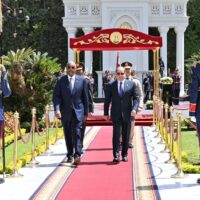The AU peacekeeping mission AMISOM and the militant group al-Shabab have both claimed casualties after the militants attacked an army base in Somalia. But the numbers are difficult to verify, a Somalia expert told DW.
The militants attacked the military base in the early morning hours of Thursday by igniting a car bomb at the gates of the complex. The AMISOM base in the western Somali town of Halgan was manned by Ethiopian peacekeeping troops. Al-Shabab initially claimed that they had killed 60 soldiers, while Ethiopia’s government spokesman told DW that these numbers were “entirely fabricated.” Instead, he said that the peacekeepers had foiled the attack, killing 101 al-Shabab fighters.
AMISOM, the African Union’s peacekeeping mission to Somalia has been in the country for almost 10 years to support Somalia’s government troops in the fight against al-Shabab. The peacekeeping mission is made up of 22,000 soldiers from Kenya, Ethiopia, Uganda and Burundi. DW spoke to Horn of Africa expert Tim Glawion about the latest attack.
Do we know why al-Shabab has not carried out so many attacks on Ethiopian troops in Somalia?
The Ethiopian troops are mostly situated near the Ethiopian border within areas that are often controlled by pro-government or even pro-Ethiopian Somali groups. So it would be more difficult for al-Shabab to get to the Somali base undetected, while in other areas such as Mogadishu or Kismayu and the surroundings, they have a much easier way of entering without people noticing that these are al-Shabab fighters.
Has al-Shabab been more active than usual recently?
The level of activity hasn’t been changing too much recently. It’s more the nature of the activities. A couple of years ago this was a real military fighting unit. You would have ground battles. You would have fights for the control of key cities and economic connection lines. While nowadays AMISOM and the government have taken back many of the key towns in southern Somalia and al-Shabab is more in the retreat, mostly in rural areas. The attacks they are carrying out now are more asymmetric. They’re not meant to take over areas. They’re meant to dishearten and threaten the enemy. So they are often attacks against security targets with suicide bombs and car bombs but this also means that al-Shabab is using attacks against civilians much more than it did in the past.
The group often steps up its attacks during Ramadan. This year is also considered critical as al-Shabab is eager to disrupt the upcoming elections. How much preparedness do you think there is on the part of the Somali troops and AMISOM to repel possible attacks by the militants.
Well, it’s almost impossible to prepare for such attacks. The situation is not easily surveyed as it is not easy to distinguish who could be an attacker and who is not. It’s very easy for an attacker to blend in to such an environment like the capital. We also see this in European cities, is very difficult. It is the nature of a terrorist attack, that it’s hidden and there is no longterm military strategy behind it. So it’s difficult anywhere in the world, but especially with a situation of civil war, it’s especially difficult within Somalia and unfortunately it’s likely that more will follow in the coming days and weeks.
What about the figures [of casualties] that al-Shabab puts out when it carries out attacks? Can they be trusted?
The problem is that we really cannot get the true numbers in this environment. It has been a problem in research and reporting on Somalia for a long time. So usually there is an attack by one side or another and al-Shabab would claim “we killed 75 AMISOM soldiers” and AMISOM would claim “we killed 75 al-Shabab”. It’s really impossible to say which is the real number, because both sides unfortunately don’t support independent reporting. So journalists on the ground also feel very targeted from both sides and they have the feeling that if they try to report neutrally about al-Shabab, the government will harass them and if they report neutrally on the government, then al-Shabab will harass them. So in this environment, numbers are very difficult to verify and if they say 100, it could just as well be 10.
Tim Glawion is a research fellow at the GIGA Instiute for African Affairs in Hamburg.
Interview: Isaac Mugabi




